Sort By Title |
Sort By Date
Tip Sheet: Built to Last: Planning Programmatic Sustainability
Date: October 2, 2013
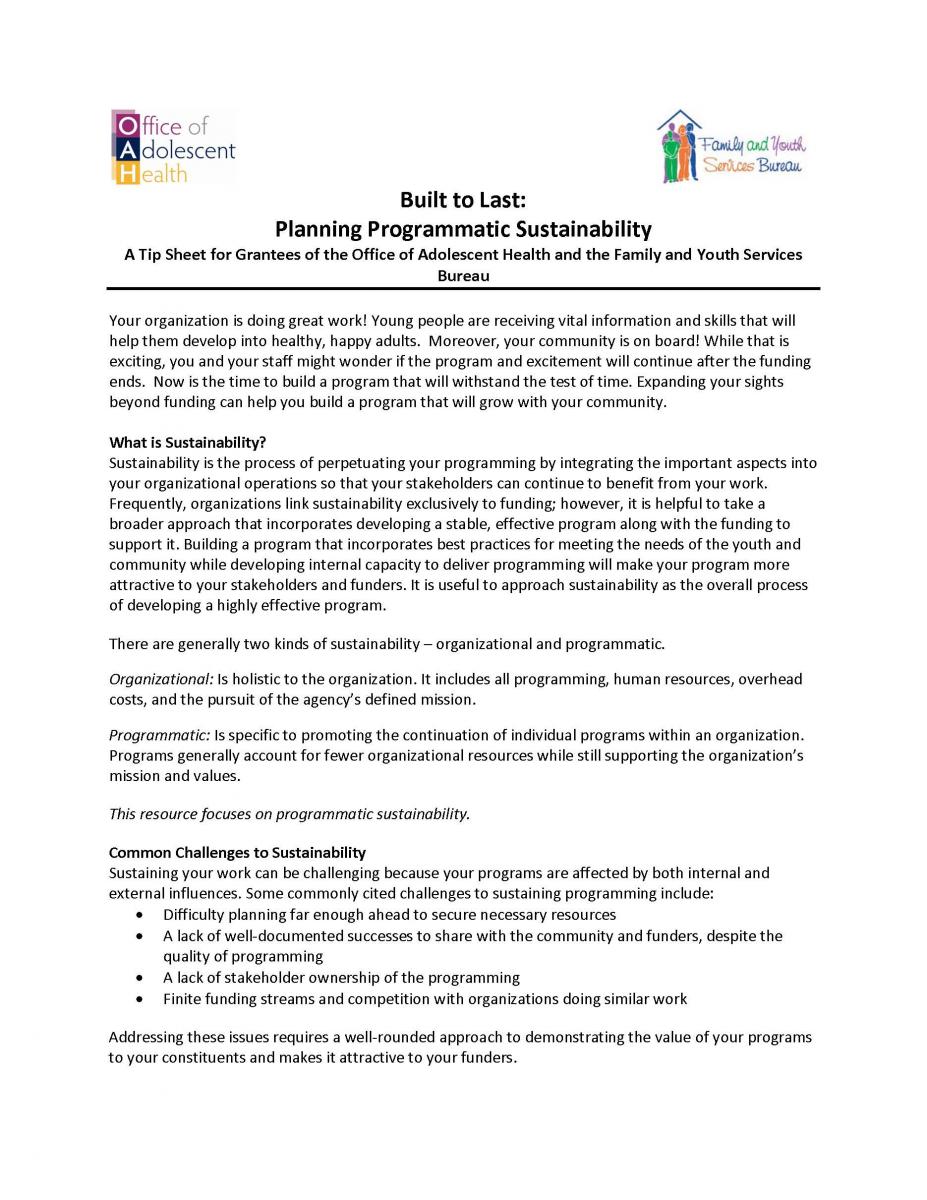
Your organization is doing great work: youth are receiving vital information and skills that will help them develop into healthy, happy adults, and your community is on board! Now is the time to build a program that will withstand the test of time. Expanding your sights beyond funding can help you build a program that will grow…
Citation: Healthy Teen Network. (2013). Tip sheet: Build to last: planning programmatic sustainability. Washington, DC: US Health and Human Services, Office of Adolescent Health and Family Youth Services Bureau.
Read more DownloadTip Sheet: Characteristics of Youth-Friendly Clinical Services
Date: October 6, 2015
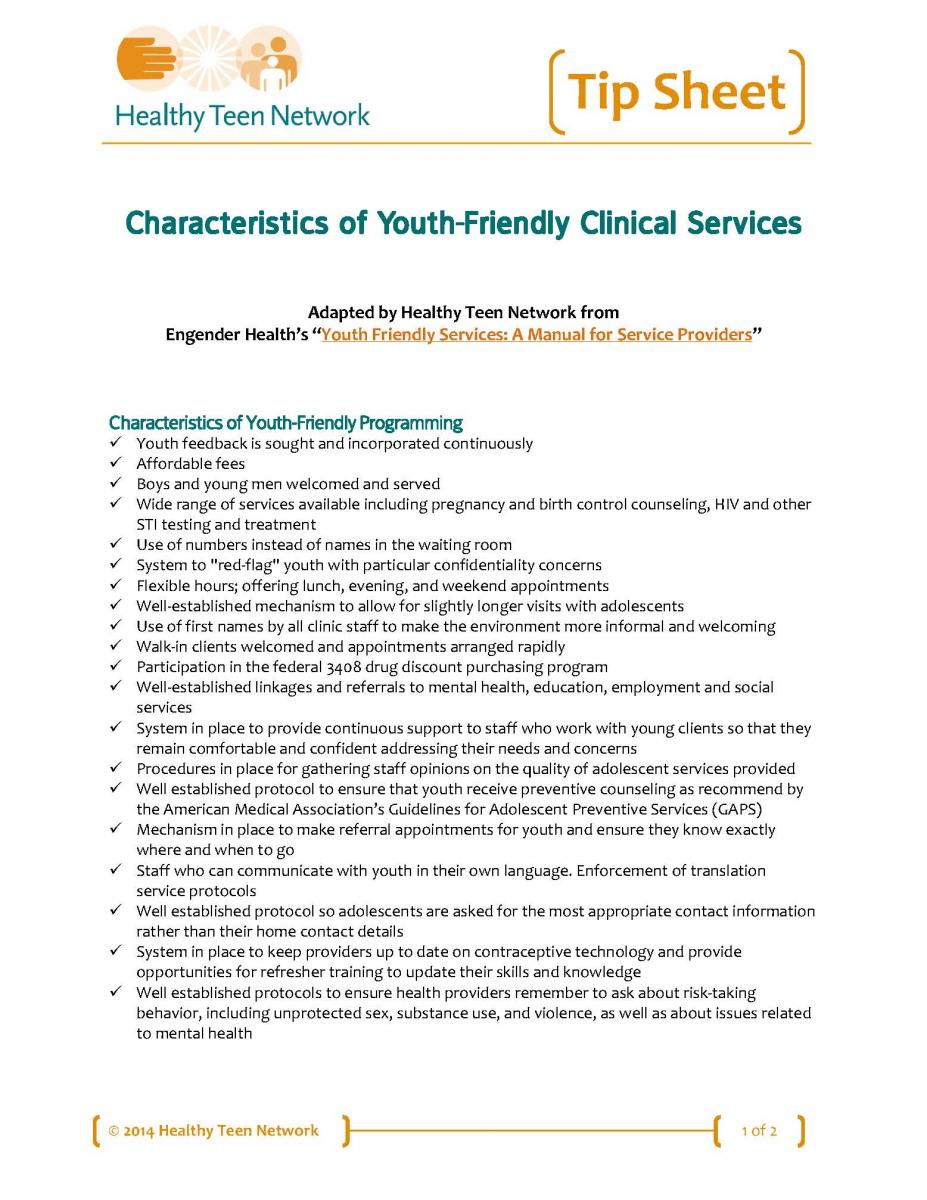
Youth-friendly services are services that all adolescents are able to obtain, and these services, which include full contraceptive coverage to avoid unintended pregnancies and STIs, should meet youth’s expectations and needs and improve their health. This tip sheet highlights characteristics of youth-friendly programming, facilities, and providers. See our other resources on youth-friendly services: Youth-Friendly Services…
Citation: Healthy Teen Network. (2015). Tip Sheet: Characteristics of youth‐friendly clinical services. Baltimore, Maryland: Garrido‐ Fishbein, M. & Banikya‐Leaseburg, M.
Read more DownloadTip Sheet: Checklist for Integrating a Trauma-Informed Approach into Teen Pregnancy Prevention Programs
Date: October 1, 2013
While a teen pregnancy prevention program generally focuses on providing sexual health education, ensuring access to youth-friendly health care services, and engaging youth, families, and communities, a trauma-informed approach is a way of addressing vital information about sexuality and well-being that takes into consideration adverse life experiences and their potential influence on sexual decision making.
Citation: Healthy Teen Network. (2013). Tip sheet: Checklist for integrating a trauma-informed approach into teen pregnancy prevention programs. Washington, DC: US Health and Human Services, Office of Adolescent Health and Family Youth Services Bureau.
Read more DownloadTip Sheet: Classroom Management
Date: January 21, 2014
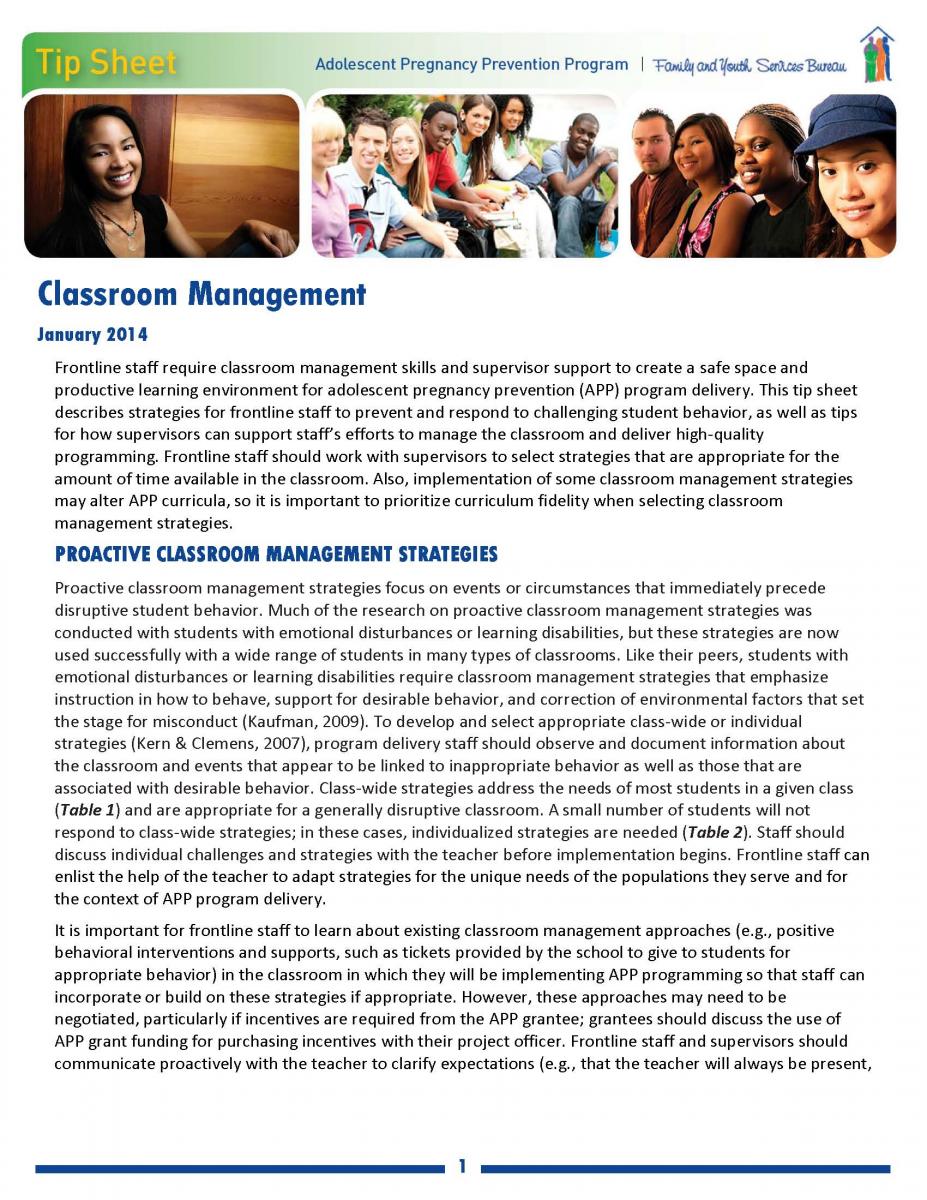
Frontline staff require classroom management skills and supervisor support to create a safe space and productive learning environment for adolescent pregnancy prevention program delivery. This tip sheet describes strategies for frontline staff to prevent and respond to challenging student behavior, as well as tips for how supervisors can support staff’s efforts to manage the classroom…
Citation: Ashley, O. S., & Chilcoat, D. (2014). Tip sheet: Classroom management. Washington, DC: Administration on Children, Youth and Families, Family and Youth Services Bureau.
Read more DownloadTip Sheet: Continuous Quality Improvement (CQI)
Date: January 22, 2013
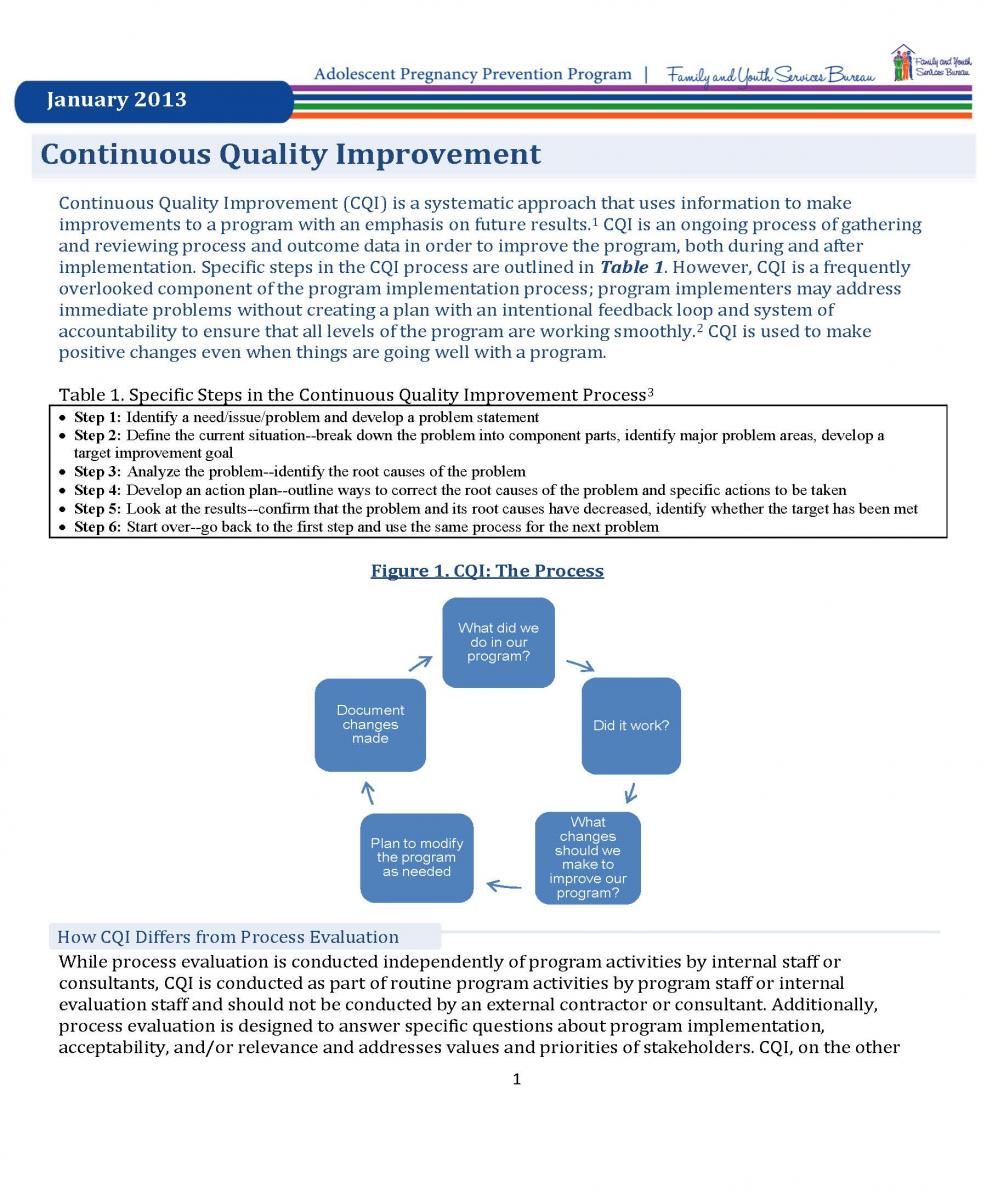
Continuous Quality Improvement (CQI) is a systematic approach that uses information to make improvements to a program with an emphasis on future results. CQI is an ongoing process of gathering and reviewing process and outcome data in order to improve the program, both during and after implementation.
Citation: Healthy Teen Network. (2013). Continuous quality improvement. Washington, DC: Administration on Children, Youth and Families, Family and Youth Services Bureau. 5
Read more DownloadTip Sheet: Engaging Young Men
Date: September 4, 2012
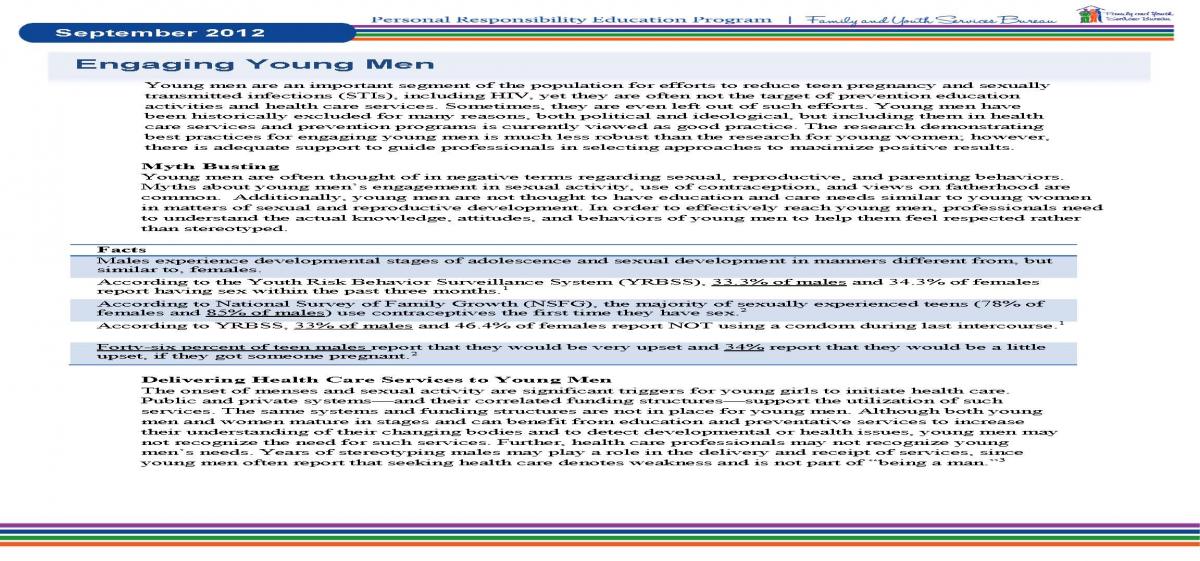
Young men are an important segment of the population for efforts to reduce teen pregnancy and sexually transmitted infections (STIs), including HIV, yet they are often not the target of programming and health care services. The research demonstrating best practices for engaging young men is much less robust; however, there is adequate support to guide…
Citation: Healthy Teen Network. (2012). Tip sheet: Engaging young men. Washington, DC: Administration on Children, Youth and Families, Family and Youth Services Bureau. 5
Read more DownloadTip Sheet: Gender, Sexuality, & Inclusive Sex Education
Date: November 14, 2016
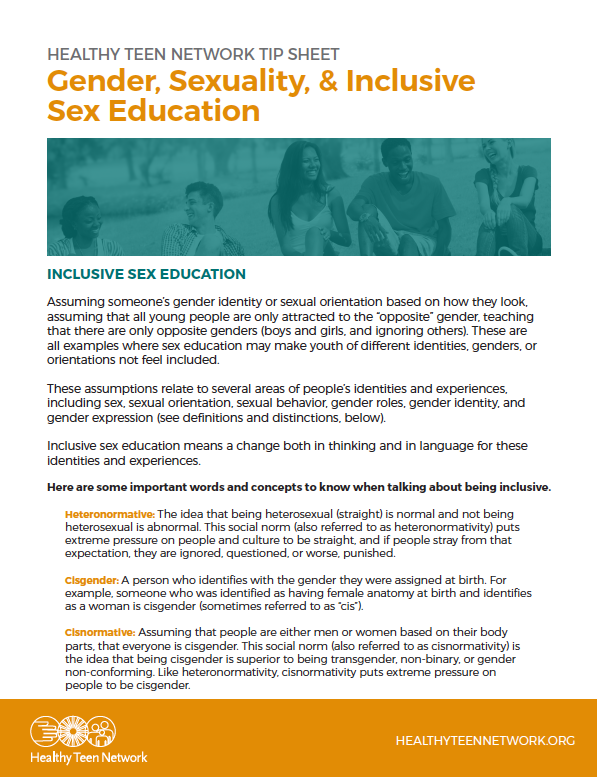
Assuming someone’s gender identity or sexual orientation based on how they look, assuming that all young people are only attracted to the “opposite” gender, teaching that there are only opposite genders (boys and girls, and ignoring others). These are all examples where sex education may make youth of different identities, genders, or orientations not feel…
Citation: Cortes, N., Eisler, A., & Desiderio, G. (2016). Tip sheet: Gender, sexuality, and sex education. Baltimore: Healthy Teen Network.
Read more DownloadTip Sheet: Increasing Our Impact by Using a Social-Ecological Approach
Date: October 6, 2015
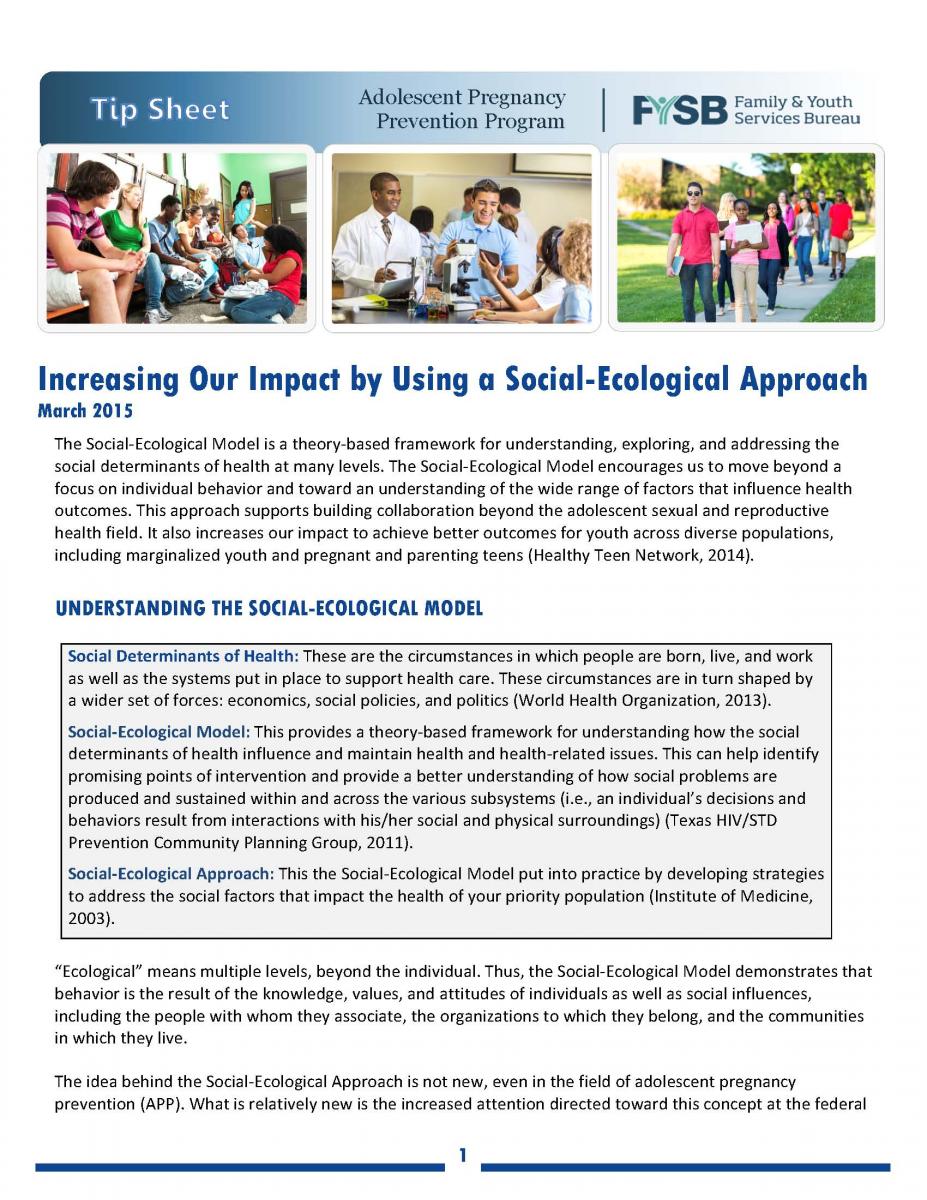
The Social-Ecological Model is a theory-based framework for understanding, exploring, and addressing the social determinants of health at many levels. The Social-Ecological Model encourages us to move beyond a focus on individual behavior and toward an understanding of the wide range of factors that influence health outcomes.
Citation: Max, J. L., Sedivy, V., & Garrido, M. (2015). Tip sheet: Increasing our impact by using a social-ecological approach. Washington, DC: Administration on Children, Youth and Families, Family and Youth Services Bureau. 5
Read more DownloadTip Sheet: Know Your Audience
Date: September 11, 2017
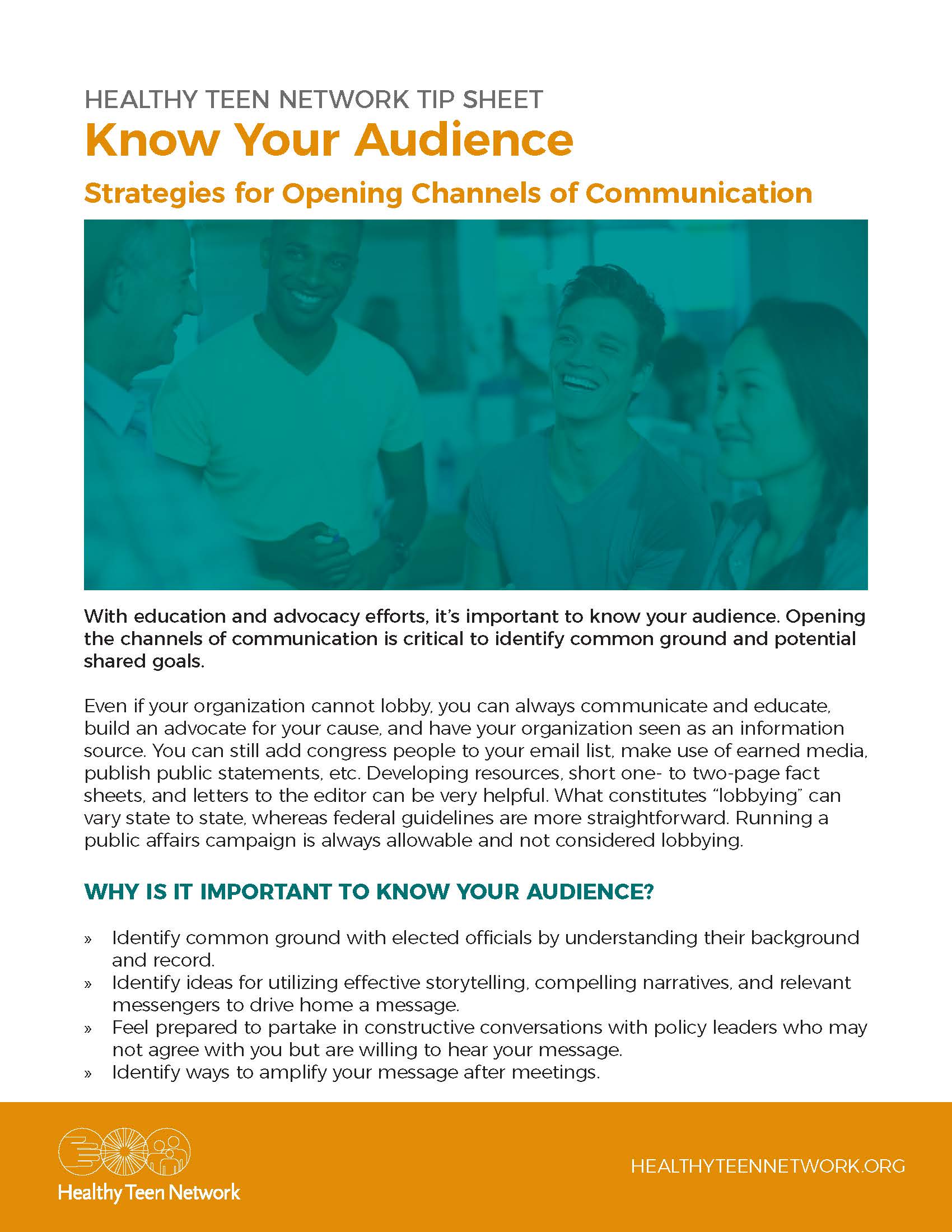
Strategies for Opening Channels of Communication When communicating with elected officials or stakeholders, it is important to understand their background and perspective: this will inevitably lead to a more productive conversation. This tip sheet provides strategies for identifying common ground with elected officials and key stakeholders and tips for opening up channels of communication. Even…
Citation: Suggested Citation: Healthy Teen Network. (2017). Tip Sheet: Know your audience: Strategies for opening channels of communication. Baltimore: Author. Available from www.HealthyTeenNetwork.org/Rresources/tip-sheet-know-your-audience/
Read more DownloadTip Sheet: Logic Model
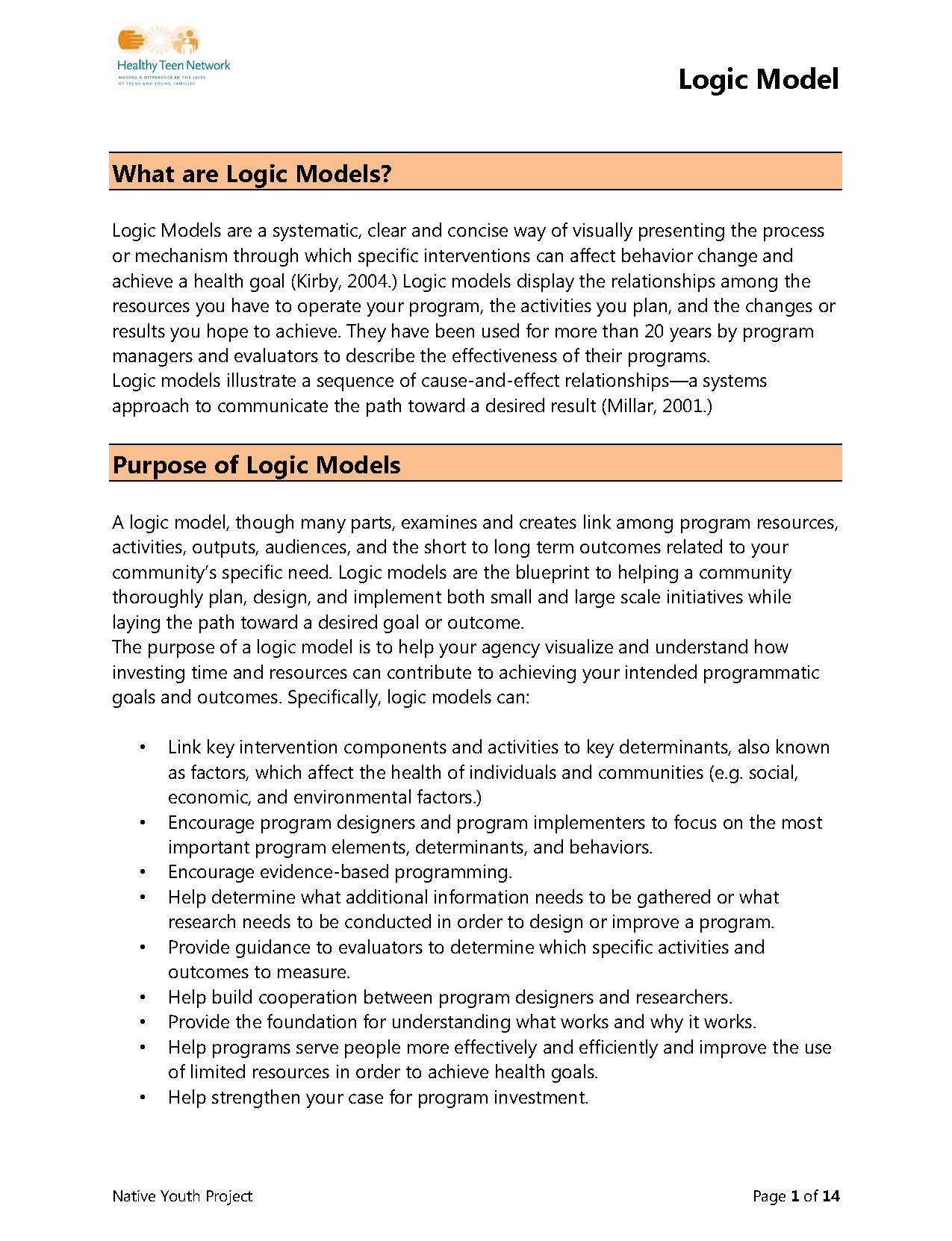
What is a logic model? Learn more in this tip sheet! Logic models display the relationships among the resources you have to operate your program, the activities you plan, and the changes or results you hope to achieve. They have been used for more than 20 years by program managers and evaluators to describe the…

